Lessons From A Tree
By Carree M.
Nature is always presenting us with opportunities to learn if we take a moment to fully absorb these gifts. While the Bay Area and many communities are under shelter in place directives, it may seem that we have been completely cut off from nature. That being said, as an avid nature lover and photographer, making a concerted effort to remain indoors is taking a lot of adjustment.
I live in a building with limited outdoor space, save a small patch of grass and one magnificent tree which someone with a whole lot more knowledge helped me identify as a Brush Cherry (Syzygium paniculatum). What is so magnificent about this tree? It attracts multiple species of birds and produces beautiful red berries. It is through this tree that I’ve honed my knowledge of visual and audio bird identification. I appreciate the education even when the birds come calling early in the morning before I had planned to wake up.

Bird Journaling
A few months back, I started a bird journal to take notes on the birds that visit the tree and their behavior. Coincidentally, the pattern on the journal cover resembles tree rings in an abstract way, so that worked out nicely. I also use this journal to record sightings of birds, mammals, etc. when out on trails and walking around my neighborhood. I find this to be a therapeutic tactile experience in this digital world. I now have a record of resident birds and those that stop in for a rest on their seasonal migration. I’ve gotten to “know” the Anna’s Hummingbird who has taken ownership of the window feeder and the House Finch that enjoys stopping by to test out his songs.

Due to the relatively small sample size of the birds who stop in I’ve gotten good at identifying calls and songs to the point of not needing to look outside to see who is out there. I still look though because I can’t say no to that. I know when the Bushtits and Ruby-crowned Kinglet are out there being their spazzy insect-hunting selves. I know when the Cedar Waxwings make their seasonal appearance via flash mobbing the tree as their soft seesaw noise is distinct as well as hearing the telltale “plopping” sounds of dropped berries hitting the ground. Other visitors include: Townsend’s Warblers, Dark-eyed Juncos, Yellow-rumped Warblers, Robins, California Towhees, Scrub Jays, Black Phoebes, Chestnut-backed Chickadees, Mourning Doves, one hawk that I failed to identify that was on the roof of the building next door (major fail on my part and still kicking myself for not looking in time). There is also one Coopers or Sharp-shinned Hawk that disturbs the Mourning Doves flying over the parking lot.
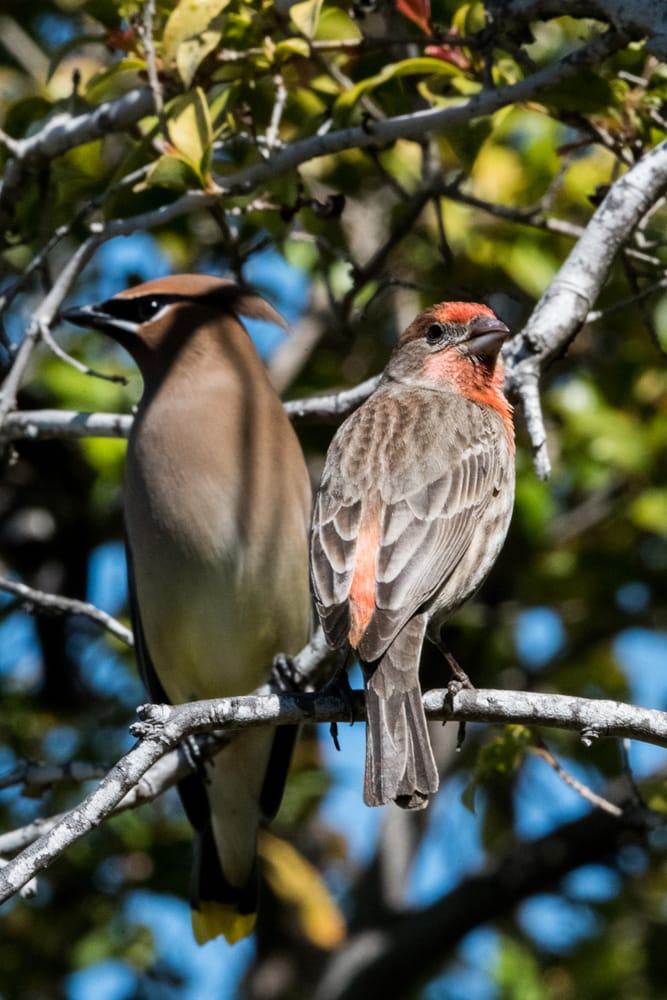
Do I get bored with observing one tree? Not in the slightest. Don’t be fooled into thinking one tree or one spot can’t present new experiences.
Just the other day I observed crows, who usually camp out on the gutter or yell into the chimney, picking through the tree to find the perfect twigs to use as nesting material. They broke off many twigs and eventually decided that none of them were good enough for their purposes, but that’s fine. Maybe they found the perfect bit of twig in a bush, tree, or a piece of grass outside your window.
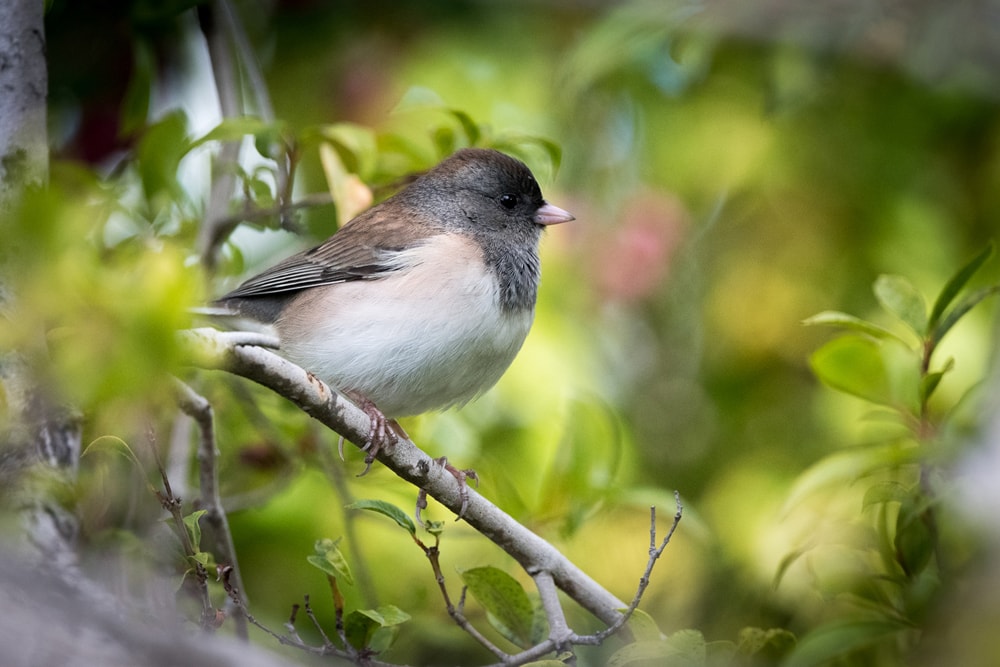
I’m also taking note of the bees that come around when the pom-pom looking tree blossoms open up. At this moment I can’t identify bee species, but maybe someday I’ll get there. For right now it’s important to make note of bees so I have data points to track any decline in activity or numbers. It is important to keep an eye on the populations of both bees and birds as they are the literal canaries of the environment.
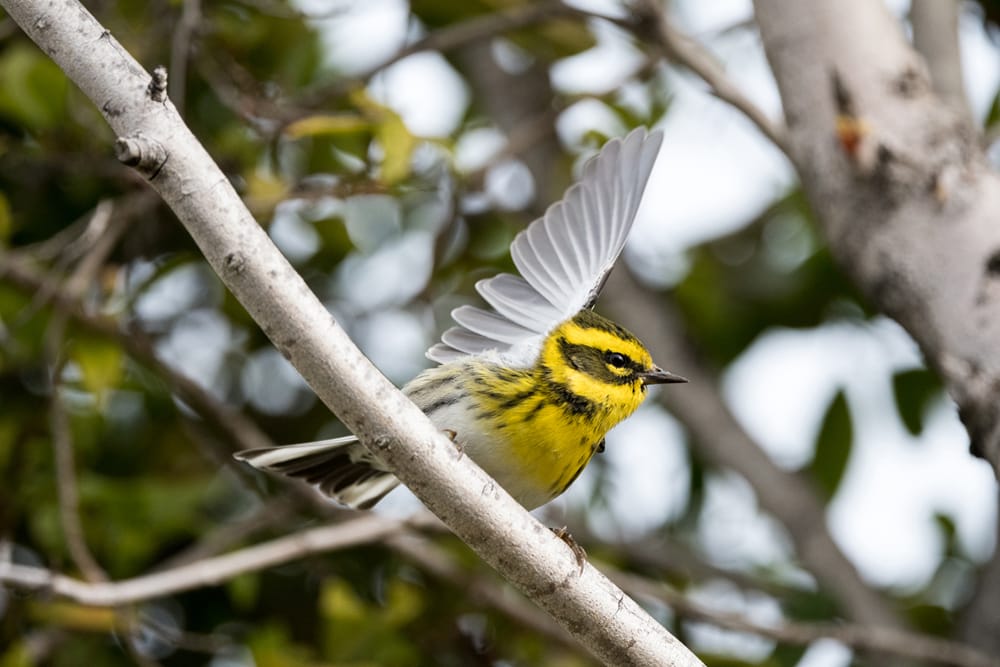
The Evolution of a Photographer
Although this tree has been there forever and I’ve always noticed the birds I never fully appreciated the activity until a few years ago. The progression from appreciating nature through my camera lens to actively learning about what I was looking at is the result of many influences, not the least of which is my boyfriend who is a volunteer with Golden Gate Raptor Observatory (GGRO). GGRO takes citizen science to a whole new level by educating volunteers on the intricacies of raptor identification for data collection during seasonal migrations. His experience led me to take a deeper dive into bird identification.

Other influences are Golden Gate Bird Alliance (GGBA) and Feminist Bird Club (FBC). Both organizations understand the many barriers to birding such as: inclusiveness and diversity (or lack thereof), economic situations, disability access, and the list goes on. These organizations understand that birders and people who want to learn about birds don’t adhere to a one size fits all mold and that to welcome and make accommodations for anyone benefits both humans and nature.
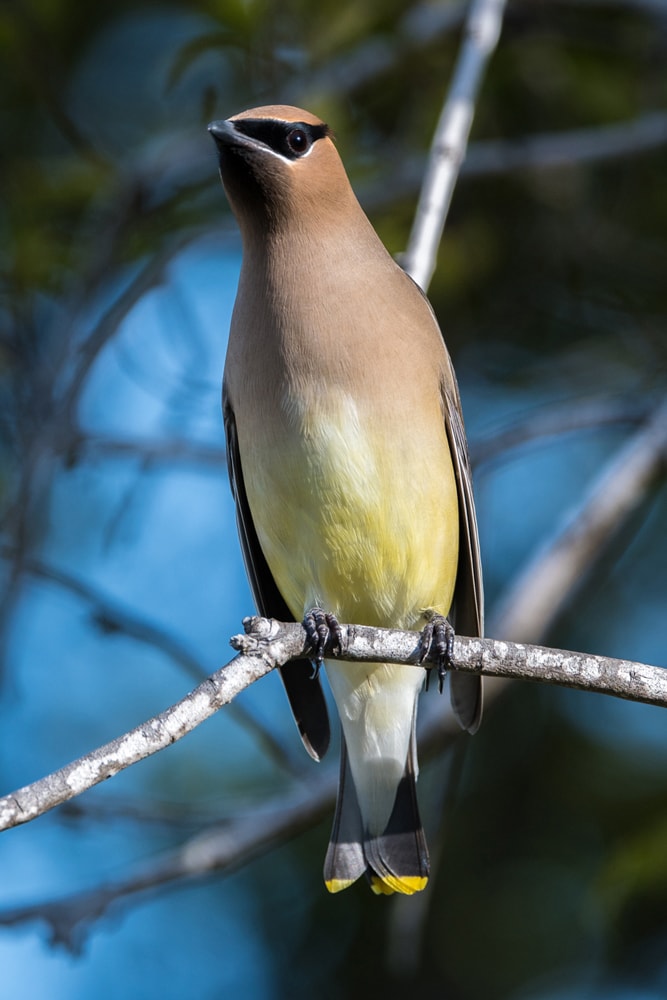
The Take-Away
I encourage everyone to keep tabs on one bush, one tree, one patch of grass that’s visible from your window or that is on your property, not only during these times, but as your interest in birds evolves. Limiting observations to one particular spot can help to hone your birding skills and prepare you for expanding your knowledge once the splendor of the outdoors is available to use on an unrestricted basis. Keep tabs on what’s happening in the world of birds. Become a citizen scientist through online birding groups and digital resources such as Merlin Bird ID and eBird.
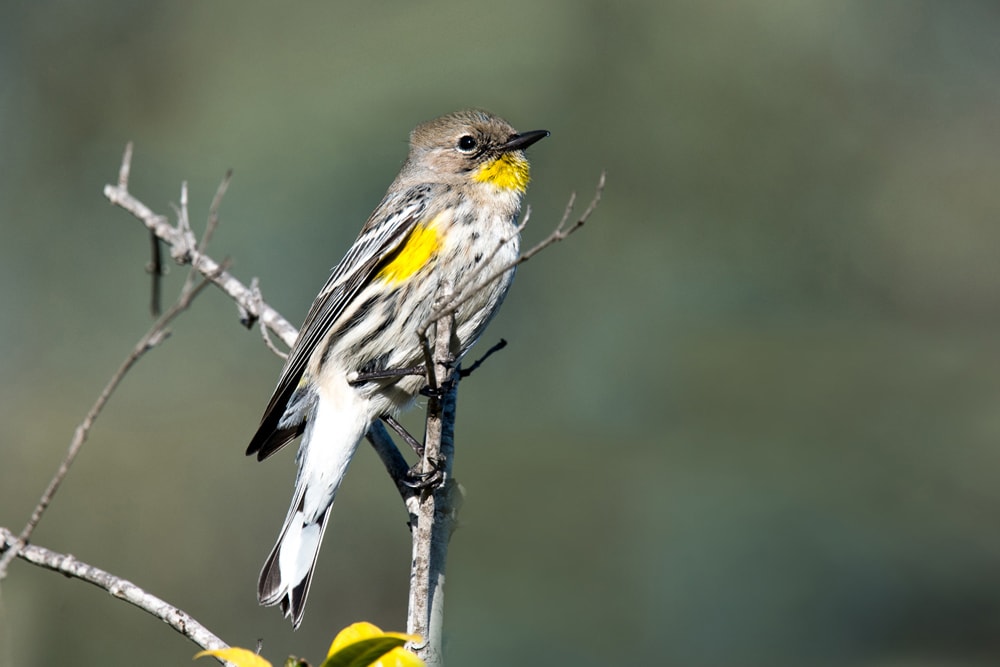
Remember, we need nature to revive us just as nature needs us to honor it. Keeping our eyes on the messages we are receiving from nature is crucial to responsibly moving forward into the unknown.
And for your listening pleasure, the beautiful song of a House Finch.
About Carree: When not birding or taking nature photos, Carree can be found thinking about birding and taking nature photos. She is a Golden Gate Bird Alliance member, an active participant in the Feminist Bird Club, and a huge crafting nerd. All photos in this blog post were taken by Carree.
We want to feature your stories about birding during this crisis. Do you have a shelter-in-place birding story you’d like to share with us? Contact GGBA’s Communications Manager, Melissa, at mramos@goldengatebirdalliance.org with 800-1200 word testimonials. Wishing you joy and peace through birding.
